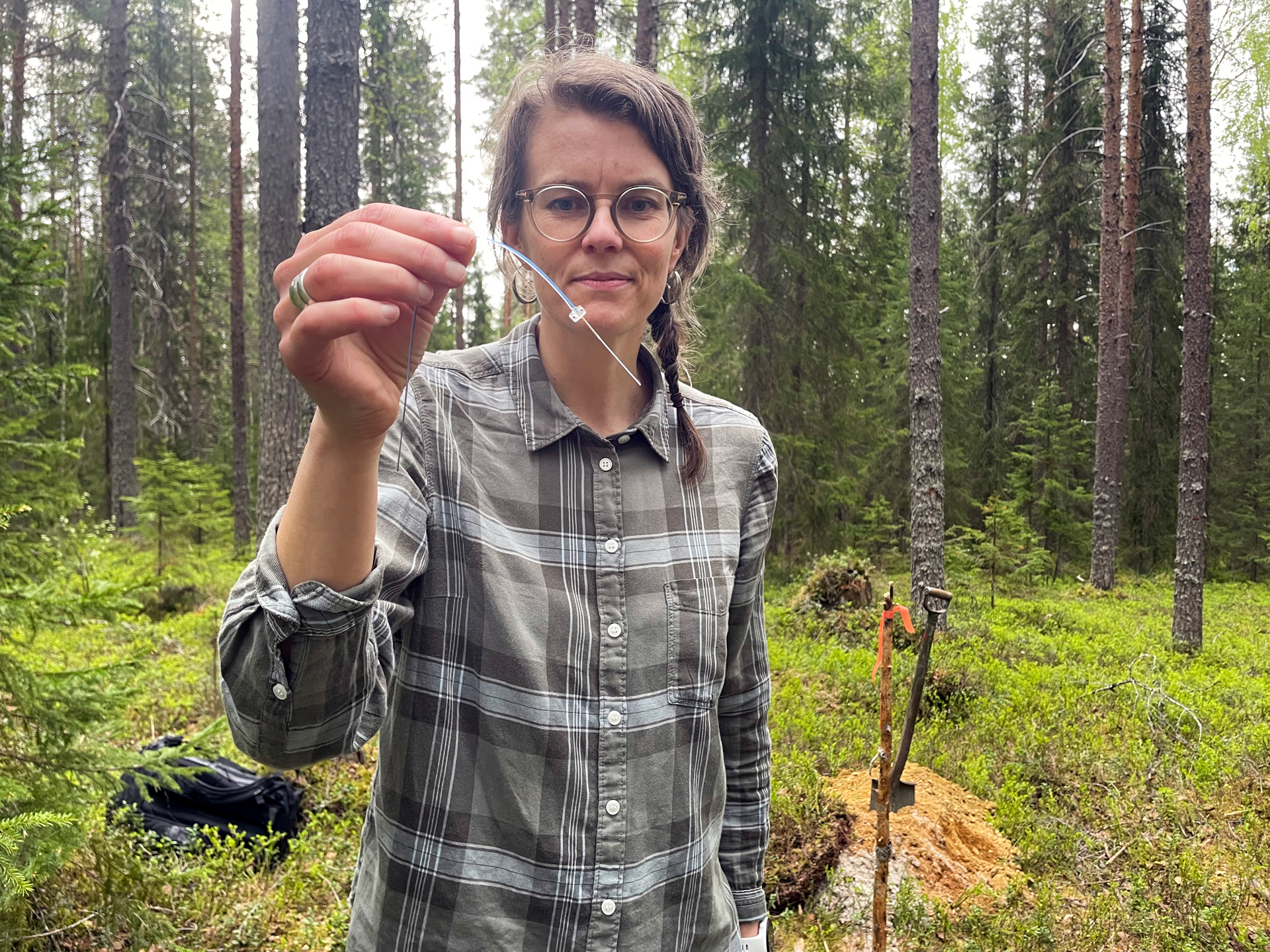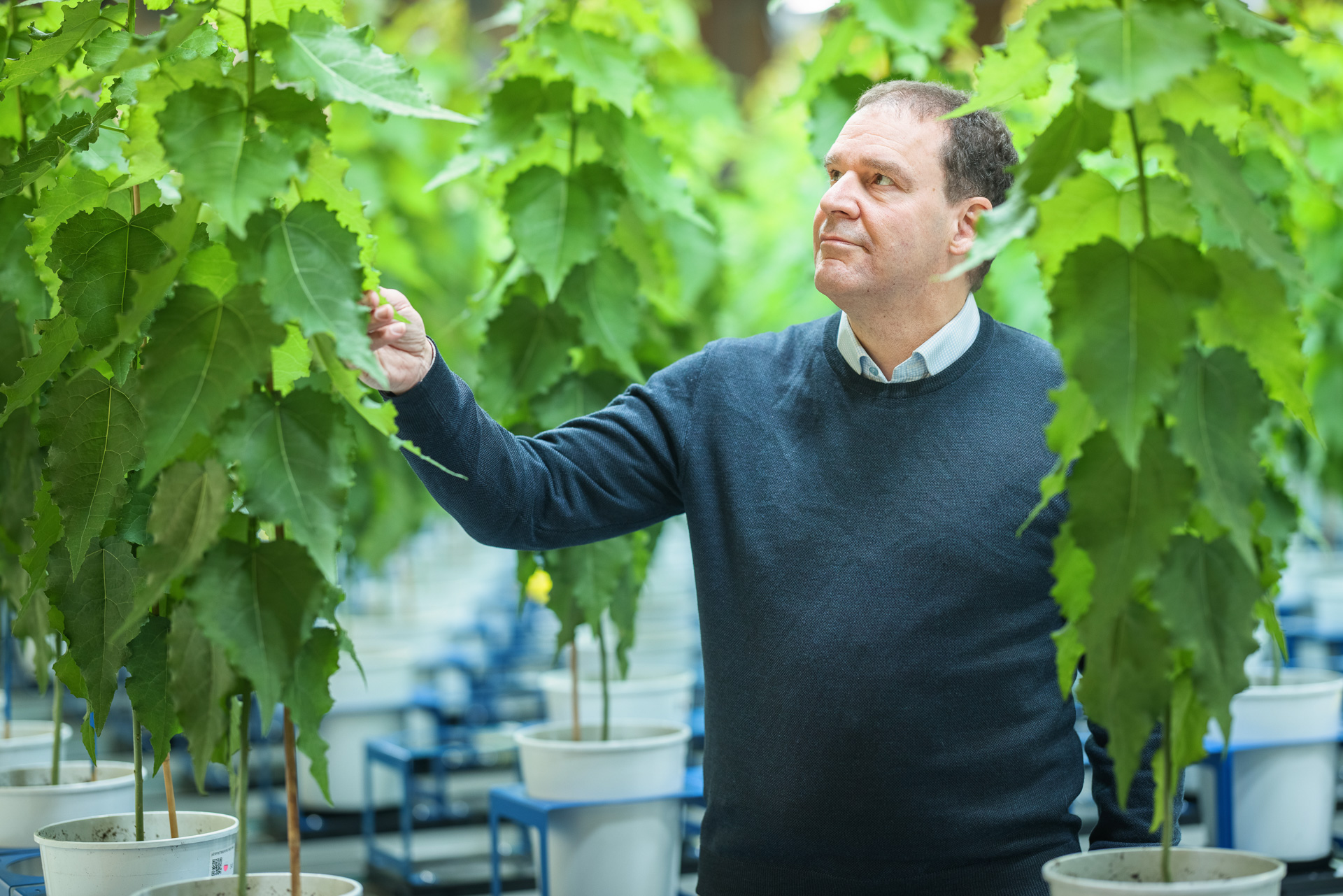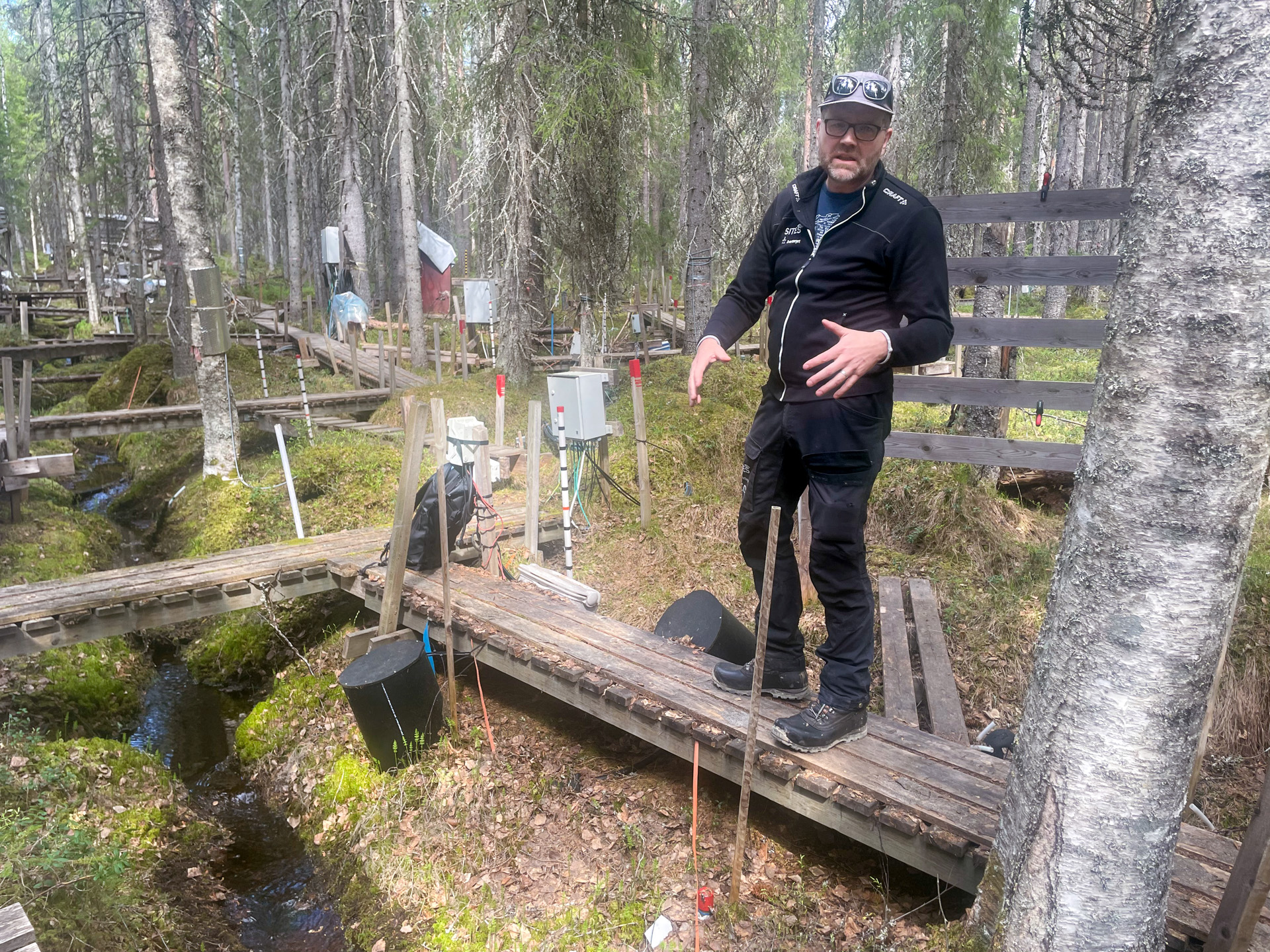“The problem is that we don’t know for sure, and we don’t know what the most important factors are. The same factors may also explain the decline – seedlings may have become more sensitive, nitrogen deposition, reduced fertilizer use, along with a warmer climate that gives drier air and soil may have a negative impact,” Laudon says.
It is clear that the decline in growth is related to water shortages, even though it does not rain or snow less than it did 20 years ago.
“It’s a complex system. That’s why we also want to study the interaction between winter climate, spring snow melt, water storage in soil and groundwater, water absorption by trees and drainage via watercourses,” Laudon explains.
Another focal point is what happens below the soil surface.
“The composition of fungal and bacterial communities also impacts growth and the best way of managing forests but is something we still know little about. Our collaboration with the other part of the program concerning forest biotechnology and genetics will be very valuable in this respect,” comments Jämtgård.

Sandra Jämtgård. Photo: Carina Dahlberg/KAW
Lack of scientific data
Although forest research has been conducted at various experimental sites around Sweden for as long as 100 years in some cases, scientific knowledge about underlying mechanisms involved in various types of forest management is in many cases deficient, particularly in the context of a changing climate. The clear-cutting, with stand-wise harvesting and regeneration, practiced since the 1950s is being increasingly called into question, and there is a need for new methods.
“In many cases our knowledge of the mechanisms underlying the impact we see from soil preparation, clearing and thinning, as well as use of nitrogen fertilizers, for example, is lacking,” says Torgny Näsholm, professor of ecophysiology. Factors such as rising carbon dioxide levels and temperatures, and changes in precipitation patterns also require more research.
“There has long been a gulf between people engaged in forest management and those of us specializing in biology and genetics. Few decisions have been based on knowledge generated by basic research. But we are now bridging this gap,” says Ove Nilsson, Director of Umeå Plant Science Centre (UPSC), whose emphasis is basic research in forest biology and forest biotechnology.
“There are some 30 or so research teams studying fundamental questions concerning growth, adaptation, breeding and genetics. These teams are involved in the program in various ways,” he explains.
Field experiments and AI
At Svartberget research station near Vindeln in the northern Swedish province of Västerbotten, researchers have access to monitoring data dating as far back as 1923 in some cases, and an infrastructure for field experiments in forest, water, air and soil. Many of the questions addressed under the program will be tested there, and at some of the other seven research sites located throughout Sweden. The tests will be carried out using data from some of the 2,000 or so field experiments that have been conducted over the years. More controlled experiments are being made and will be made in the UPSC laboratory, glasshouse and climate chamber. Here, one of the aims is to breed and develop traits in new seedlings that are better adapted to a changing climate.
Just as large-scale DNA sequencing technology and AI have revolutionized medicine, these technologies are now having the same impact on forest research. eDNA – environmental DNA – is a powerful research tool for studying all organisms present in collected samples.
“This will enable us to study all aspects of biodiversity. A water sample can tell us which fish are present in a lake. An air sample can tell us about all animals present in a zoo, for example, and a soil sample reveals information about tens of thousands of microorganisms,” says Nilsson.
The technology also enables the researchers to study how ecosystems are altered by different forms of forest management. One side-effect is that the efficacy of the technology generates huge quantities of data.
“We still have some way to go before we really understand how to use all this information. But we can see it is useful in order to examine changes and studies the dynamics,” Nilsson says.

Ove Nilsson. Photo: Fredrik Larsson
Genetic diversity is another field in which technological strides are being made.
“It’s now possible to see how different trees in a forest are related to each other. We can study their diversity and, for example, how they cope with a warmer climate, their resistance to drought and diseases, and on that basis create breeding programs to produce seedlings and saplings that are better adapted to a changing climate.”
In essence, the program aims to conduct basic research to provide a basis for finding the right sorts of tree adapted to the places they will grow in combination with the management method best suited to those locations, taking biodiversity into consideration.
The third branch of the program is a research school for 50 PhD students.
“The research school is important in many ways. It will give us a network reaching out to other research fields within the Faculty of Forest Sciences. Our industry-sponsored PhD students will strengthen the network with input from industry and other stakeholders in the field,” says Nilsson, who is scientific director of the school, along with Hjalmar Laudon.
Text: Carina Dahlberg, Knut and Alice Wallenberg Foundation
Translation: Maxwell Arding
Photos: Carina Dahlberg, Fredrik Larsson (the picture of Ove Nilsson)



